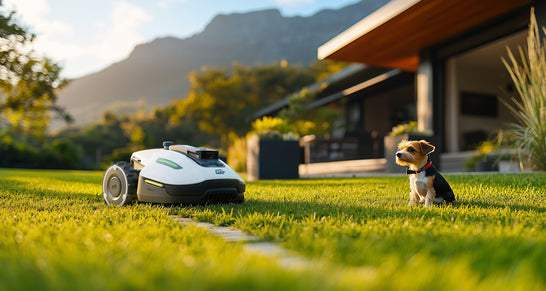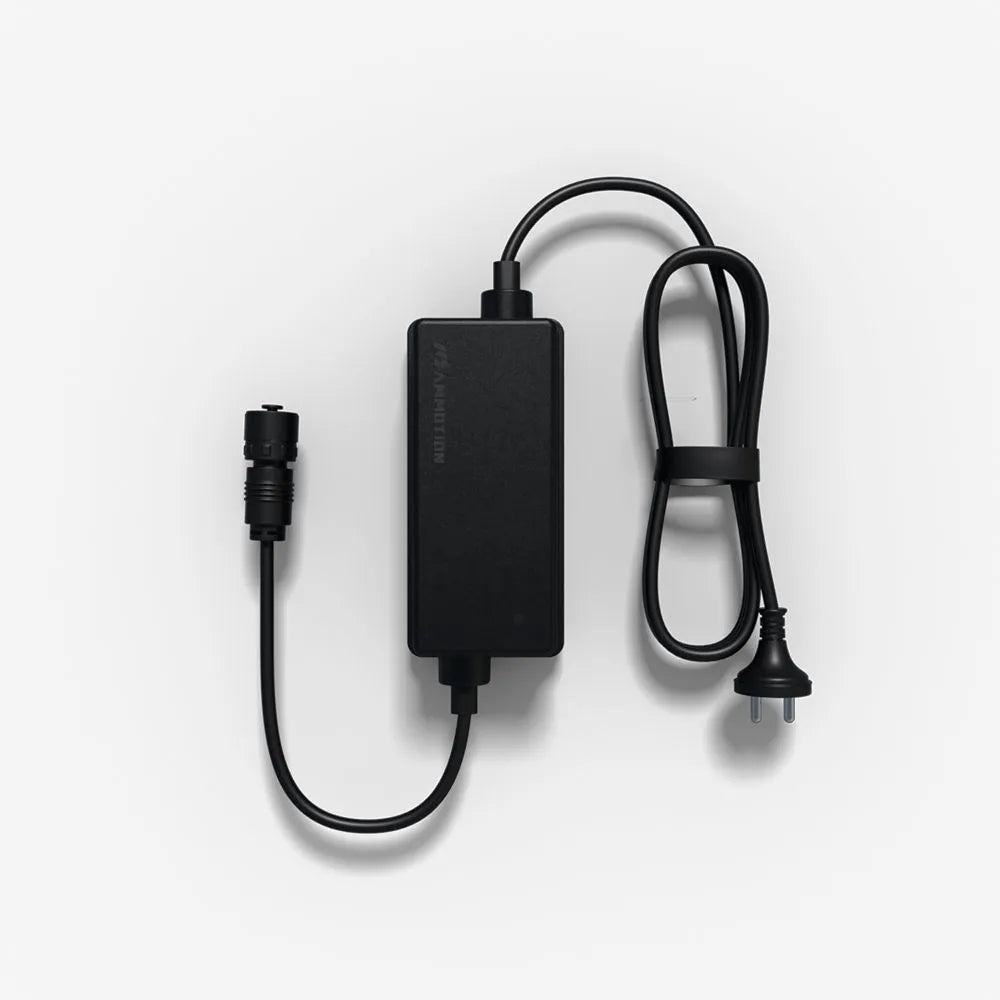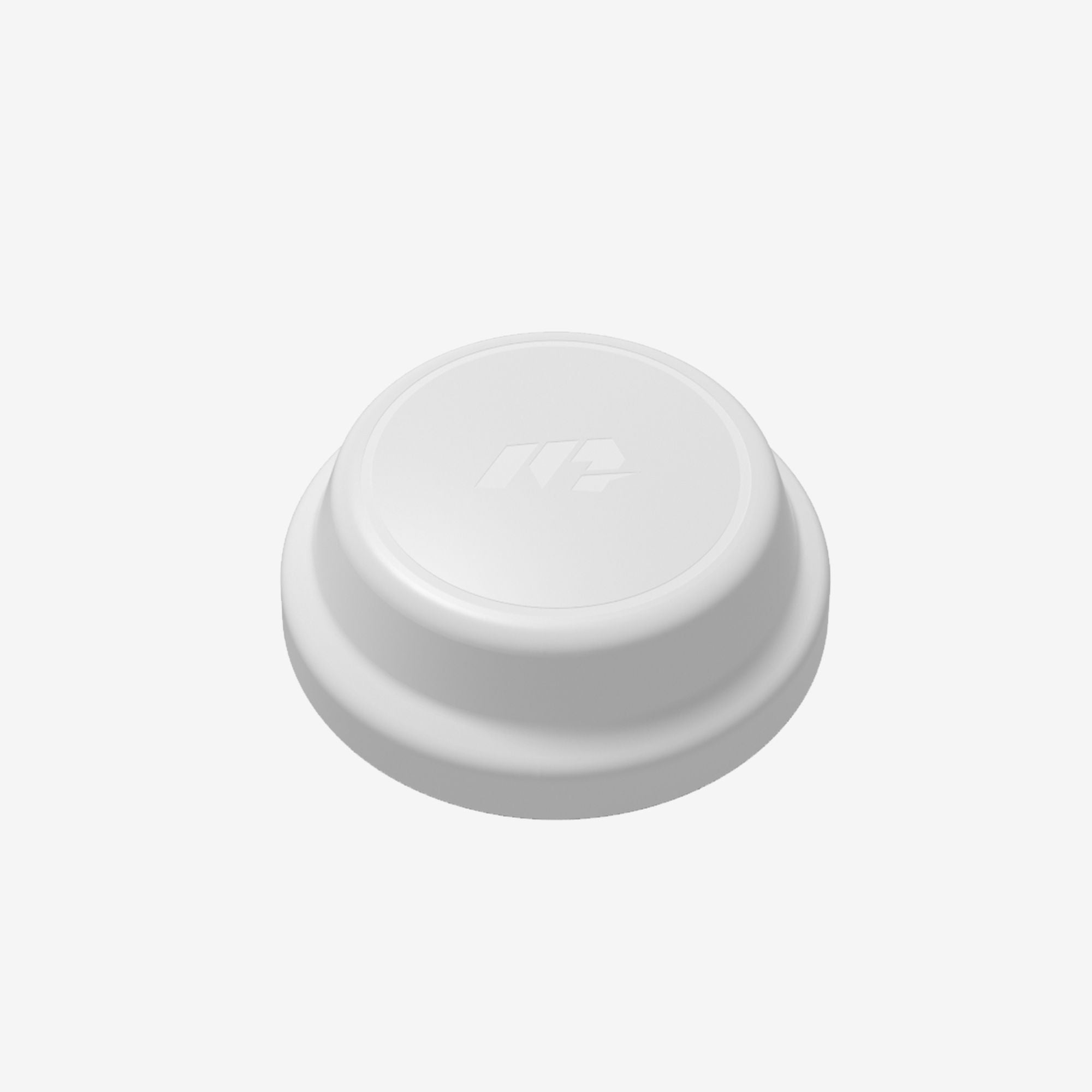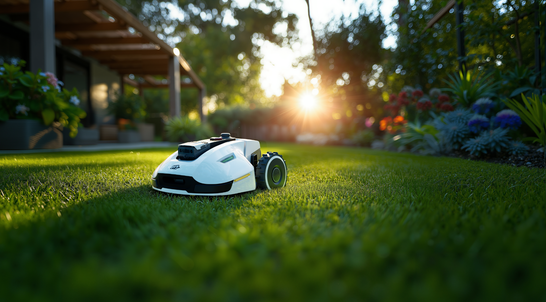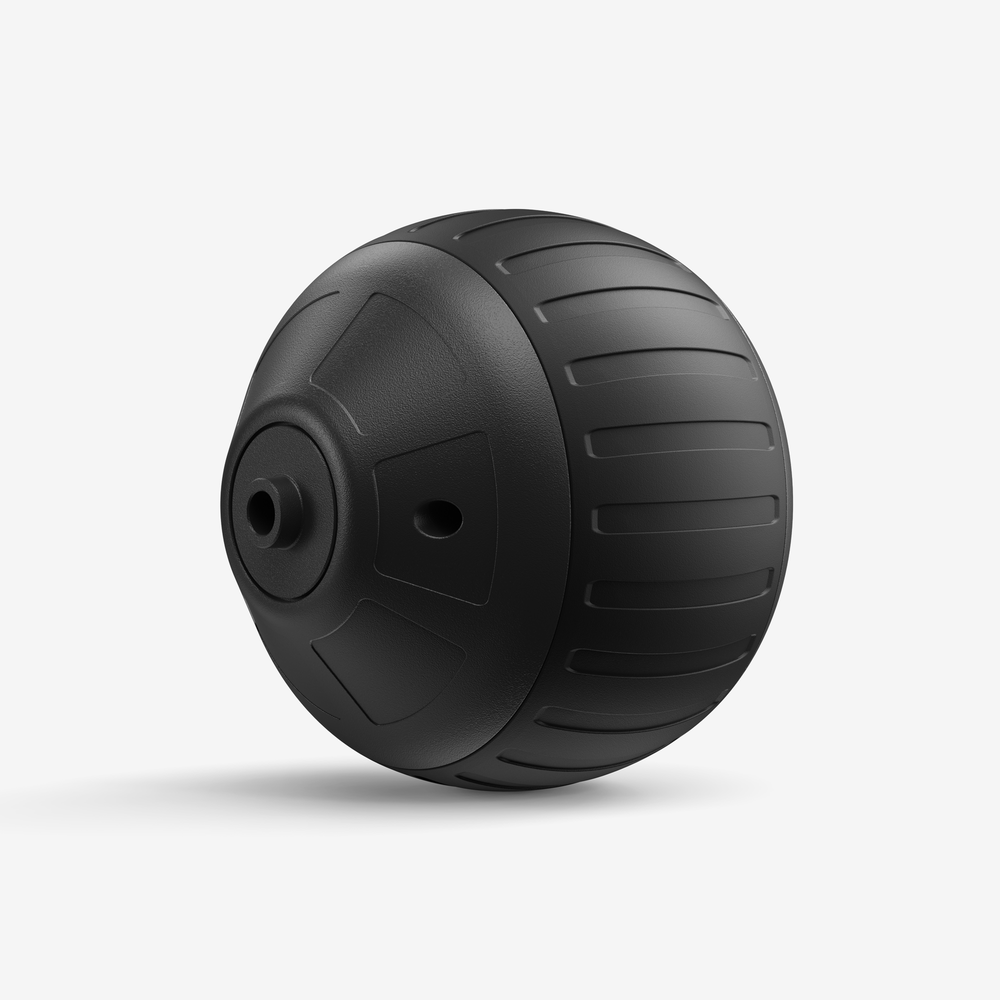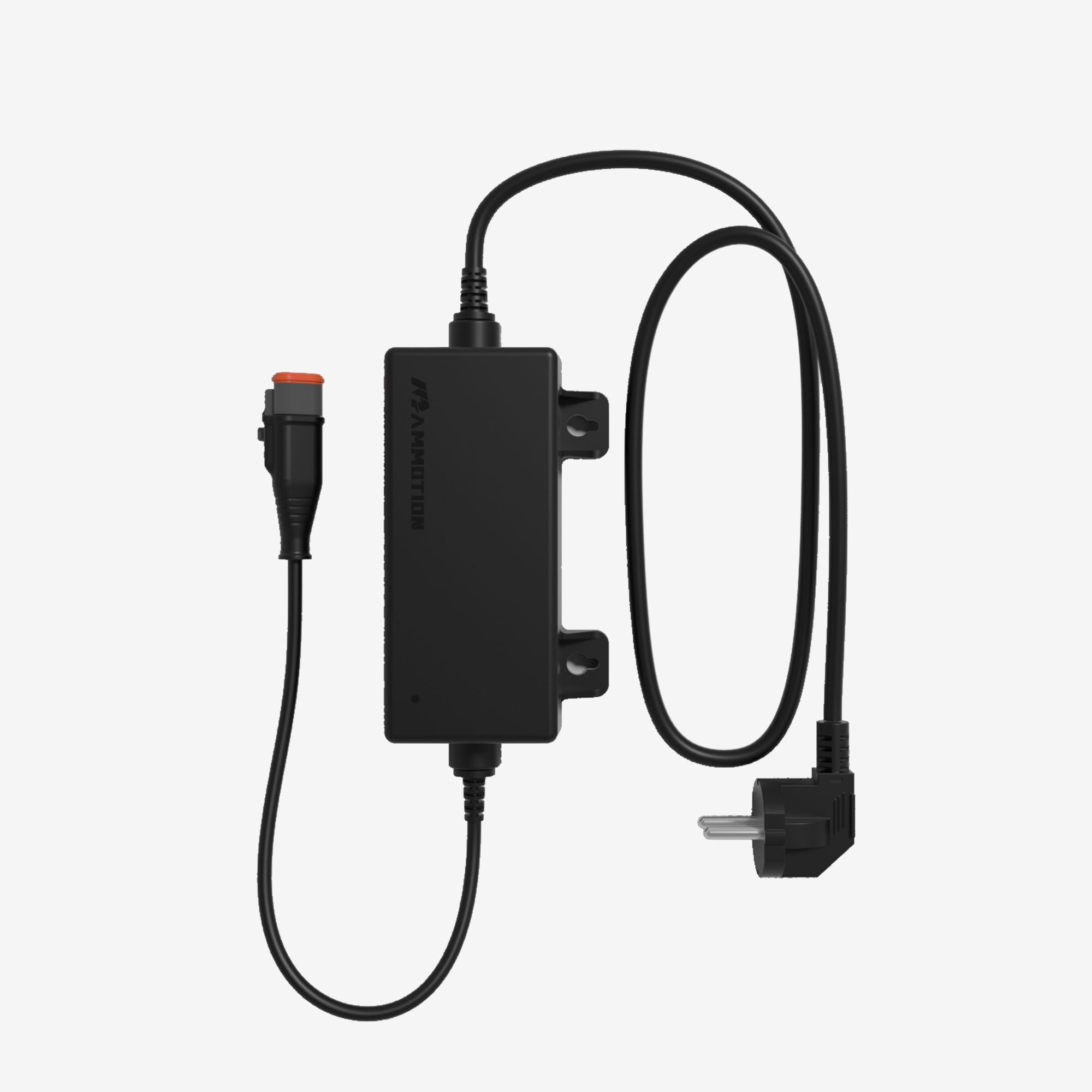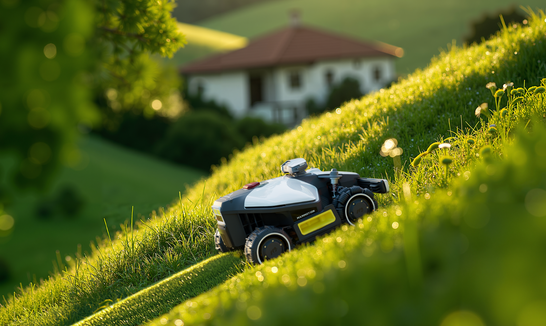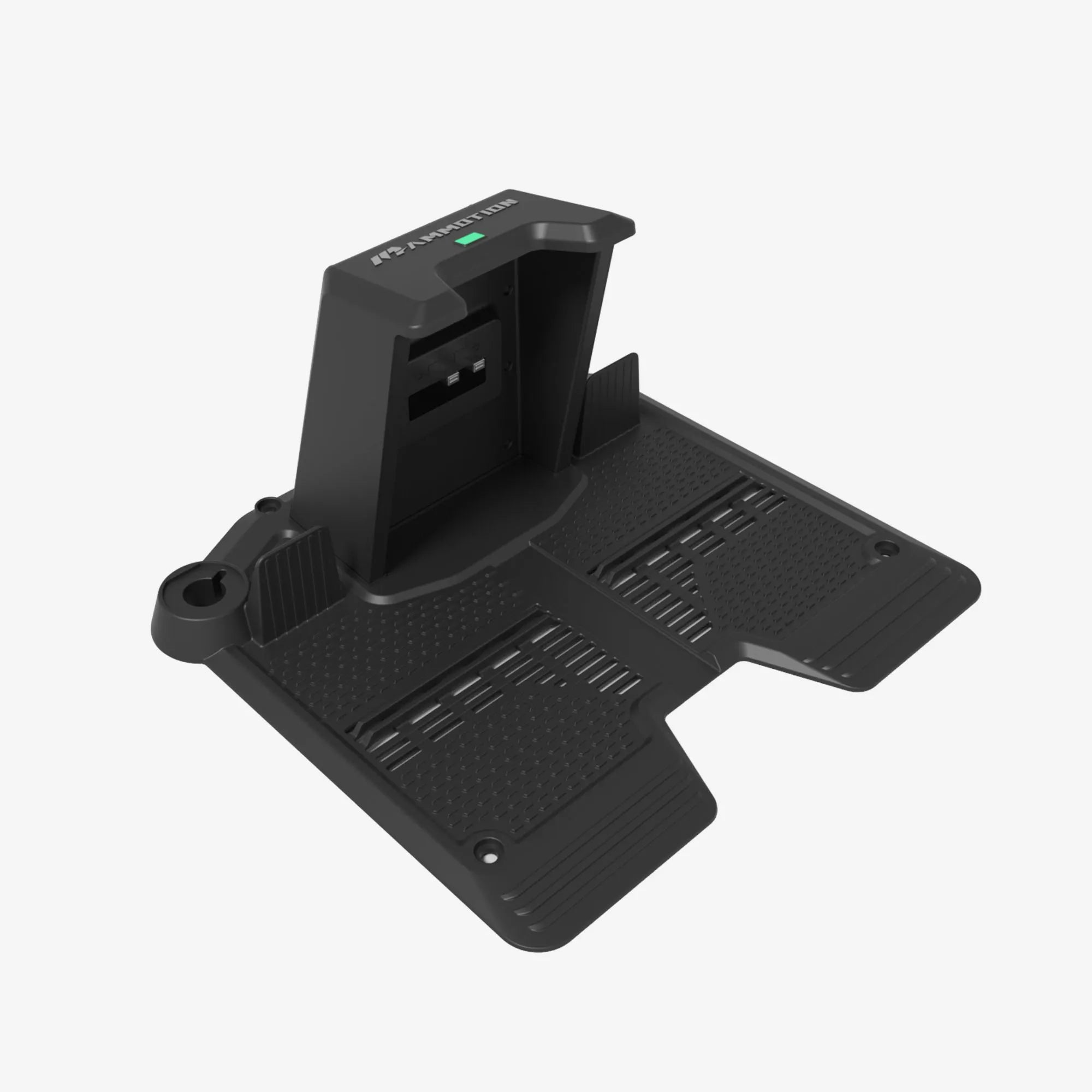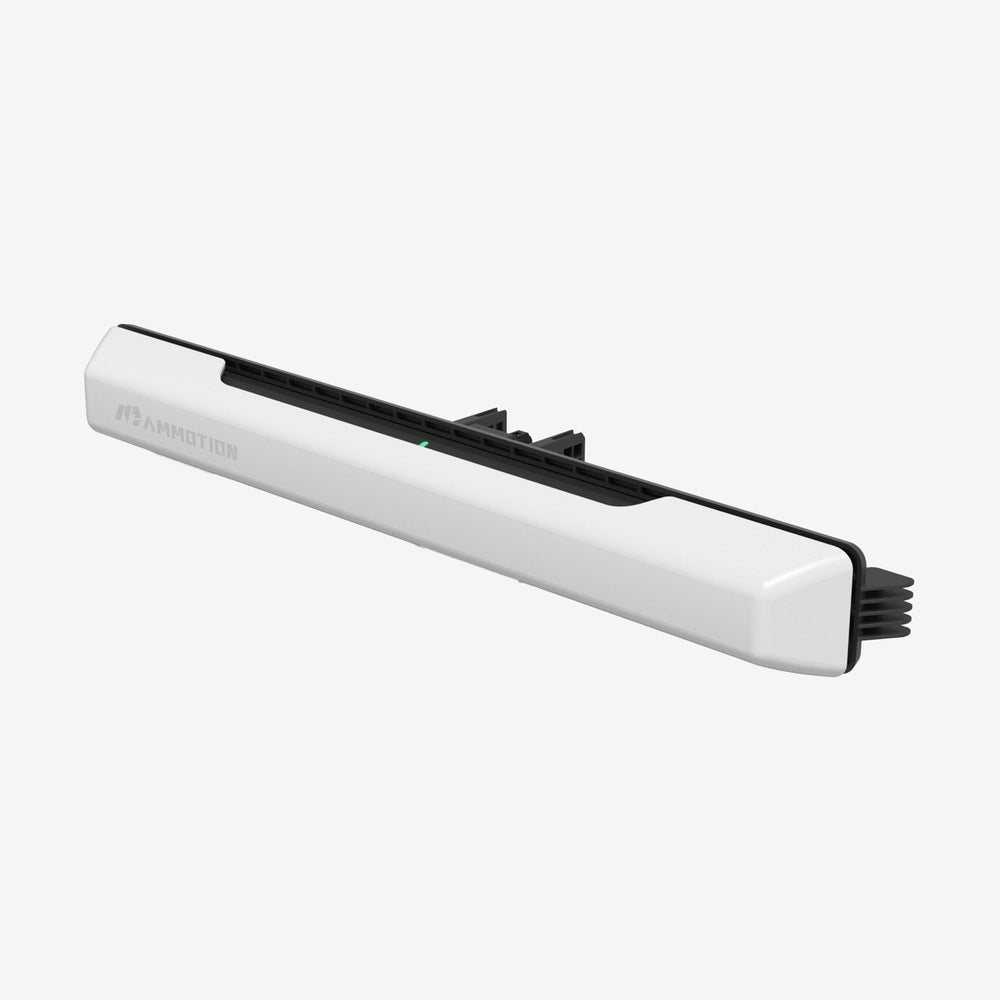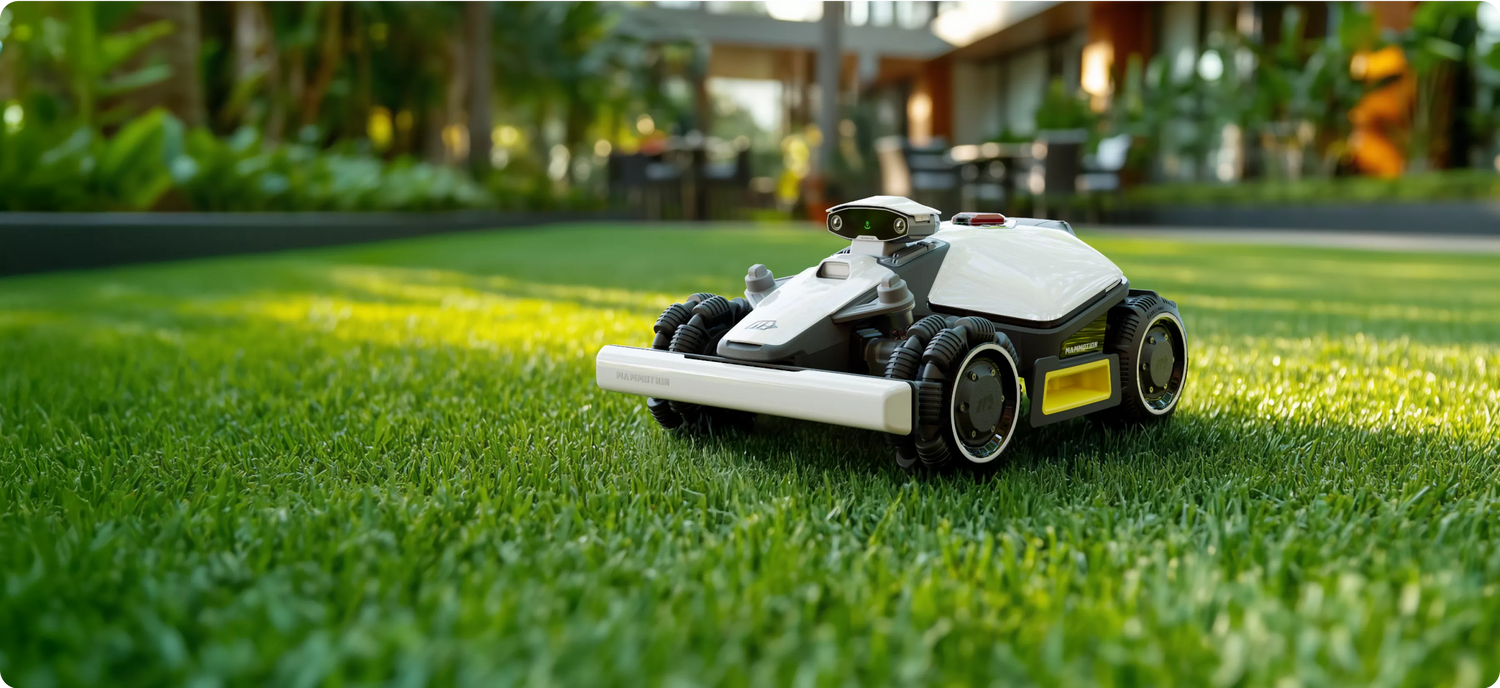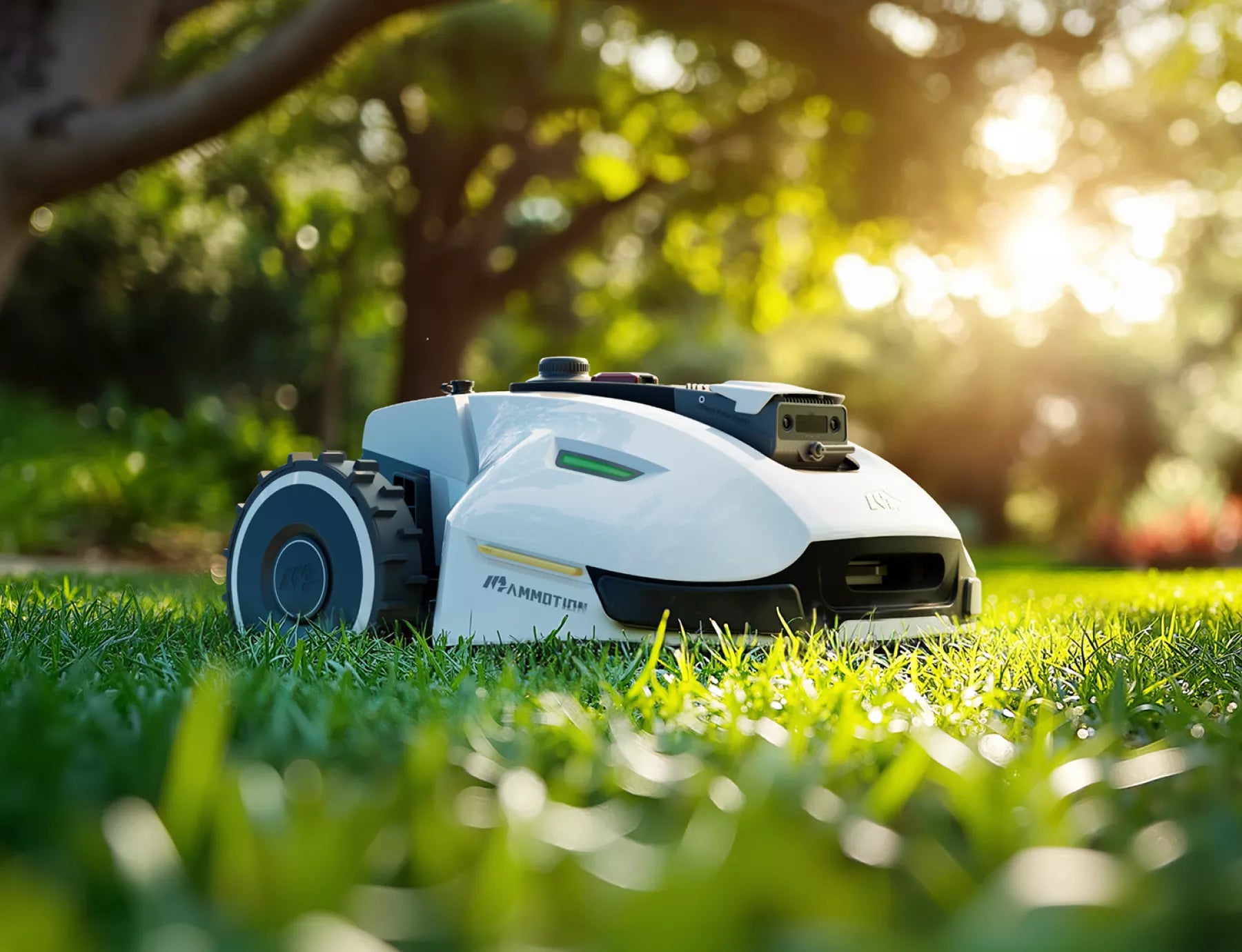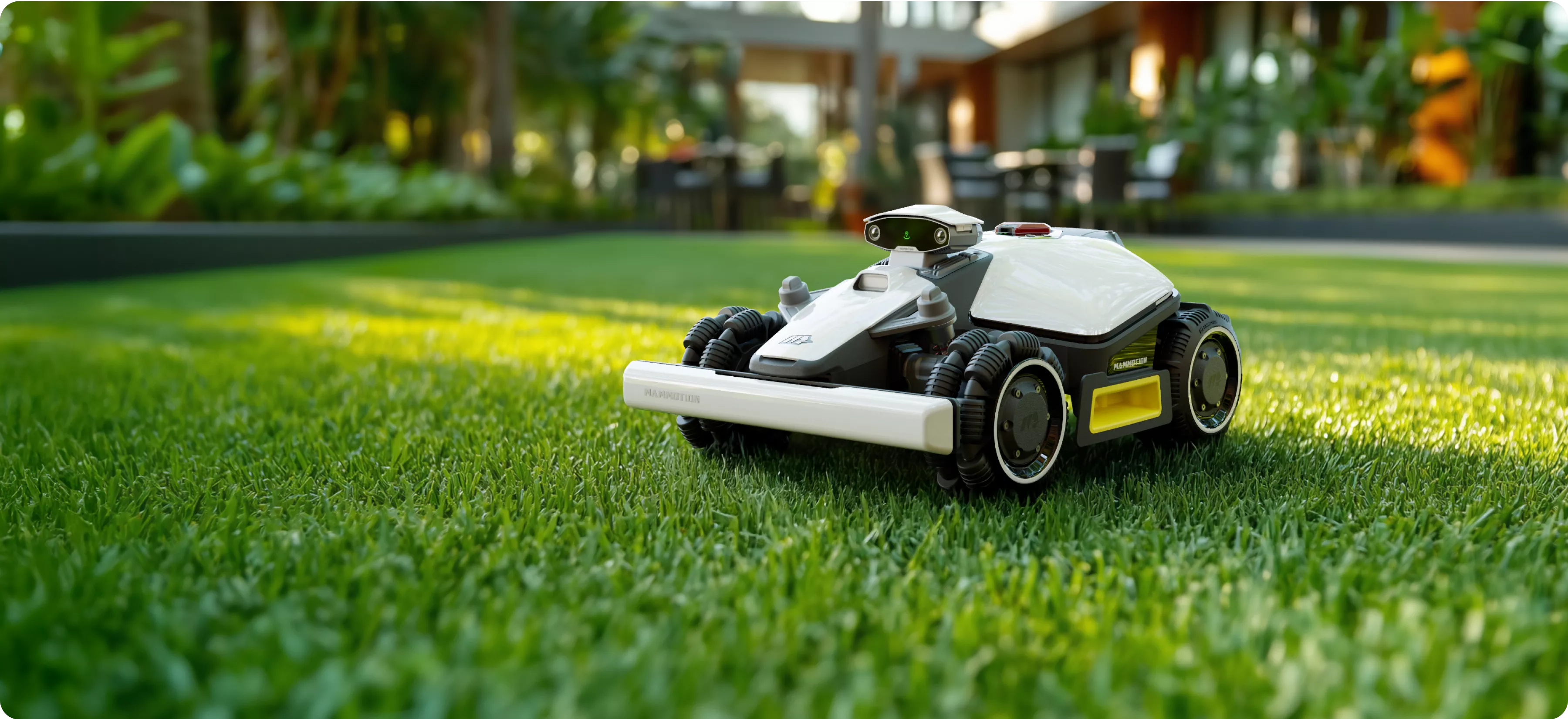Imagine sitting on your patio, sipping your morning coffee, while your lawn quietly cuts itself to perfection. That’s not the future — that’s today. The robot lawn mower has become the go-to gadget for UK homeowners who want lush green grass without the hassle.
Over the past few years, these smart garden helpers have transformed from niche tech toys into practical, efficient tools. They handle everything from small suburban patches to sprawling countryside lawns, managing slopes, avoiding obstacles, and even mowing in the rain.
In this complete robot lawn mower guide, we’ll cover everything you need to know — how do robot lawn mowers work, how to choose the right model, what to expect from installation, and how brands are redefining the lawn care game.
Part 1.What Is a Robot Lawn Mower and How Does It Work?
A robot lawn mower is essentially an autonomous machine designed to cut your grass without manual effort. It uses a combination of sensors, GPS, and navigation algorithms to move around your garden, cutting grass evenly and automatically returning to its charging base when needed.
1. Core Components
- Blades or cutting discs – sharp rotary blades that trim the grass a few millimetres at a time.
- Navigation system – GPS, RTK, or boundary wire defining the mowing area.
- Sensors – detect obstacles, slopes, or wet grass.
- Charging base – the “home” where the mower automatically recharges.
- App connectivity – allows you to schedule mowing times, monitor progress, or adjust height remotely.
2. How Do Robot Lawn Mowers Work?
Robot lawn mowers work in a surprisingly smart and efficient way — they’re basically tiny autonomous gardeners that keep your lawn tidy with minimal effort from you. Here’s a breakdown of how they work step by step:
1) Mapping and Navigation
Most robot lawn mowers start by mapping your lawn area.
- With boundary wire: Traditional models use a boundary wire installed around the edges of your lawn. The mower detects the wire’s signal and stays within that zone.
- Wire-free models: Advanced models like Mammotion LUBA use GPS-RTK (Real-Time Kinematic) or AI vision systems to map your lawn digitally — no wires needed. They can recognize obstacles, define multiple mowing zones, and even follow specific mowing routes.
2)Mowing Mechanism
Robot mowers use rotating razor blades (usually 3–5 small ones) located under the chassis. They cut just a few millimeters of grass at a time, but do so frequently (often daily or several times per week).
This “micro-cutting” method keeps the lawn constantly trimmed and encourages denser, healthier growth. The fine grass clippings act as natural fertilizer (mulching), so there’s no need to collect or dispose of them.
3) Battery and Charging
Robot mowers run on rechargeable lithium-ion batteries. When the battery gets low, they automatically return to the charging station, recharge, and resume mowing from where they left off.
Some high-end models can mow for up to 3–4 hours per charge, covering large lawns of several thousand square meters.
4) Obstacle Detection
Modern robotic mowers are equipped with ultrasonic sensors, bump sensors, or AI vision systems to avoid obstacles like trees, pets, or garden furniture.
If they encounter an obstacle, they simply stop, reverse, and change direction. Advanced models with AI vision (like Mammotion YUKA) can even distinguish between static and moving objects and react accordingly.
5) Weather and Terrain Adaptation
Many models have rain sensors — if it starts raining, they pause mowing and return to base. High-end versions are waterproof (IPX5 or above) and can continue mowing in light rain.
AWD (All-Wheel Drive) models can handle slopes up to 75–80% (about 37–38°) and uneven terrain with ease.
6) Smart App Control
You can control and monitor your mower via a smartphone app:
- Set mowing schedules and cutting heights
- Divide your garden into zones
- View mowing progress or live map
- Get notifications (like “Mowing complete” or “Battery low”)
- Some systems even use voice assistants like Alexa or Google Home for easy control.
7) Safety Features
Blades automatically stop spinning if the mower is lifted or tilted. Many have PIN codes or GPS tracking to prevent theft. Soft bumpers and sensors ensure safety for pets and kids.
3. What Are the Different Types of Robot Lawn Mowers?
1) By Navigation System — How They Find Their Way
| Type | Description | Typical Models / Features |
|---|---|---|
| Boundary-Wire Mowers | Use a physical wire installed around the perimeter to define mowing zones. Most common in older models. | Affordable and reliable but time-consuming to install (e.g. Worx Landroid basic models). |
| GPS-Guided Mowers (RTK) | Use satellite positioning (RTK) for accurate, wire-free mapping. | High precision (±2–3 cm), great for large gardens (e.g. Mammotion LUBA series). |
| AI Vision Mowers | Use onboard cameras and sensors to visually map and detect obstacles. | Truly wire-free setup, auto-mapping, adapts to obstacles dynamically (e.g. Mammotion YUKA). |
| Hybrid (GPS + Vision) | Combine GPS and camera data for ultra-stable mapping even under trees or near walls. | Most advanced; ideal for complex gardens and variable environments. |
2) By Wire or Wireless
| Type | Navigation | Setup | Precision | Suitable For | Example |
|---|---|---|---|---|---|
| Boundary-wire | Uses a physical wire to mark edges | Manual installation | Moderate | Small–medium gardens | Husqvarna Automower 315 |
| Wire-free (RTK GPS/NetRTK/AI) | Uses satellite signals and AI vision | Simple, no digging | High | Smal–large gardens | Mammotion LUBA 2 AWD |
3) By Drive & Terrain Capability
| Type | Description | Best For |
|---|---|---|
| 2WD (Front/Rear Drive) | Standard for flat or small lawns. | Small, level gardens. |
| 4WD / AWD (All-Wheel Drive) | Superior grip on uneven or sloped terrain (up to 75–80%). | Large gardens with hills. |
4) By Lawn Size Coverage
| Type | Coverage | Example Use |
|---|---|---|
| Compact Mowers | < 500 m² | Townhouses, small suburban gardens. |
| Mid-Range Mowers | 500–1500 m² | Standard family gardens. |
| Large-Area Mowers | 1500–5000+ m² | Estates, commercial or countryside lawns. |
5) By Cutting System
| Type | Description | Effect |
|---|---|---|
| Rotary Blade Disc | One or more spinning discs with small razor blades. | Efficient and low-noise cutting. |
| Dual Cutting Discs | Two discs for wider coverage and cleaner stripes. | Faster, more even results. |
| Cylinder / Reel Type | Vertical rotating blades (rare in robots). | Fine ornamental lawns (golf-like finish). |
6) By Different Functions
| Type | Description | Target User |
|---|---|---|
| Pet-Friendly Mowers | Equipped with AI object recognition or ultrasonic sensors to avoid pets, toys, and obstacles. | Families with pets or young children. |
| Smart App-Controlled | Managed via mobile apps for scheduling and mapping. | Remote control, scheduling, firmware updates. |
| Waterproof / Weatherproof Mowers | Designed with IPX5–IPX6 protection; work safely in rain and humid conditions. | UK users dealing with frequent rain or morning dew. |
| Eco-Friendly Models | Fully electric with zero emissions, low energy consumption, and minimal maintenance. | Environmentally conscious homeowners. |
Part 2. Why Choose a Robot Lawn Mower?
Thinking about switching to a robot lawn mower? Here’s why it’s worth it:
- Time-Saving: Automatically trims your lawn on schedule — no more weekend mowing.
- Healthier Grass: Performs frequent micro-cuts and mulches clippings, feeding your soil naturally.
- Perfect Cutting Results: Uses GPS or AI navigation to mow evenly and avoid obstacles.
- Eco-Friendly & Quiet: Battery-powered with zero emissions and low noise (around 55–60 dB).
- Safe for Kids & Pets: Equipped with lift, tilt, and obstacle sensors plus child-lock and PIN code.
- Works in All Weather: Waterproof (IPX5–IPX7) and equipped with rain sensors for automatic pauses.
- 3D Lawn Printing: Achieve precise, symmetrical lawn designs with GPS-guided mowing — from straight stripes to checkerboards and spirals.
Part 3. How to Choose a Robot Lawn Mower?
Choosing the ideal robot lawn mower depends on your garden’s layout, slope, and the level of automation you expect. Below is a ranked guide — from the most essential to the nice-to-have — complete with star ratings showing each factor’s importance.
1. Navigation Accuracy & Mapping System
★★★★★
Navigation determines mowing precision and efficiency. Top-tier models use RTK GPS or AI vision mapping for centimetre-level accuracy.
They can mow in clean, straight lines, manage multiple zones, and avoid missed spots — giving your lawn a professional striped finish.
Why it matters: Perfect mapping saves time, energy, and ensures uniform grass height.
2. Terrain & Slope Capability
★★★★★
If your garden has slopes or uneven areas, slope handling is crucial.
- Entry-level: handles up to 25 % (≈ 14°)
- Mid-range: handles up to 35 % (≈ 19°)
- Premium (e.g., LUBA 2 AWD): handles up to 80 % (≈ 38°) with all-wheel drive.
Why it matters: Ensures stable performance and prevents wheel-slipping or stalling.
3. Lawn Size & Coverage
★★★★☆
Each mower model is designed for a maximum working area — from 300 m² for small gardens to 5000 m²+ for large estates.
Choose a mower rated 20 % above your actual lawn size to maintain consistent coverage and battery performance.
Why it matters: The correct capacity ensures efficient mowing cycles without mid-job stops.
4. Battery Life & Automatic Charging
★★★★☆
Typical battery duration ranges 60–150 minutes per charge. Smart mowers automatically return to charge and resume where they left off.
Why it matters: Long battery life and auto-recharge mean truly hands-free lawn care.
5. Cutting Width & Height Adjustment
★★★★☆
A wider cutting deck reduces total mowing time. Look for models offering 20–90 mm height adjustment for different seasons and grass conditions.
Why it matters: Flexible cutting improves both speed and grass health.
6. Obstacle Detection & Safety
★★★☆☆
Advanced sensors or AI-based vision detect obstacles like toys, pets, or even dog poop, avoiding collisions or damage.
Why it matters: Keeps your mower, family, and garden safe.
7. App & Smart Controls
★★★☆☆
Through Wi-Fi or Bluetooth, you can manage mowing schedules, define zones, adjust speed or height, and update firmware via an app.
Why it matters: Convenient remote control and updates make operation effortless.
8. Noise Level
★★☆☆☆
Ideal residential models operate below 60 dB — quieter than a normal conversation.
Why it matters: Allows mowing early or late without disturbing neighbours.
9. Price & Long-Run Value
★★☆☆☆
Prices typically range £600 – £3,000+.
Instead of focusing on the cheapest option, assess long-term value — savings in time, labour, and energy costs quickly add up.
Why it matters: Premium models with stronger navigation and batteries deliver the best ROI over years.
Balance the top three factors — Navigation, Terrain — first. Then match secondary preferences like battery life, smart control, and quietness for a mower that perfectly fits your lifestyle.
Part 4. How to Install a Robot Lawn Mower?
Installation varies depending on the system, but the general process looks like this.
1. Wire-Based Models
- Step 1. Plan Your Layout: Sketch your lawn and mark obstacles such as flower beds, trees, or ponds. Decide where the charging base will go — ideally on flat ground near a power outlet.
- Step 2. Place the Charging Station: Install the base on level ground with at least 1–2 m of open space in front for docking and undocking. Connect the power supply.
- Step 3. Lay the Boundary Wire: Run the wire around the lawn edges, 5–10 cm from the border. Use plastic pegs to secure it to the ground, keeping the wire tight and flat. If your mower supports guide wires, lay them from the base station to remote zones for efficient navigation.
- Step 4. Connect and Test: Attach both ends of the wire to the charging base terminals, switch on the mower, and start the mapping process. Adjust boundaries if the mower misses corners or overlaps.
2. Wire-Free Models
Modern smart mowers like Mammotion LUBA or YUKA series no longer require physical wires. They use RTK (Real-Time Kinematic) and Net-RTK positioning systems for centimetre-level accuracy.
- Step 1. Set Up the RTK Reference Station (for RTK models): Mount the RTK antenna or reference station on a stable, open area (e.g., garden fence, wall, or pole) where it has unobstructed sky view. Avoid placing it under trees or near tall buildings that could block satellite signals.
- Step 2. Connect the Charging Dock: Position the dock within the RTK coverage area. Ensure the mower can easily drive in and out of the station.
- Step 3. Map the Lawn Using the App: Open the companion app (e.g., Mammotion App) → start “Create Map” → manually drive the mower around your lawn. The system will record every edge, obstacle, and mowing zone digitally — no wires required.
- Step 4. Define Virtual Boundaries & Zones: Use the app to set no-go areas, multi-zones, and mowing routes.
- Step 5. Test Run: Launch a short test to verify boundary precision. Adjust virtual borders or mowing paths in the app if needed.
With Net-RTK (network-based positioning), you can skip the physical base entirely — the mower connects directly to a cloud correction network via Wi-Fi or 4G for signal accuracy across large gardens. NetRTK models are ideal for large, open lawns or multi-property use, offering plug-and-play setup with no digging or wiring at all.
| Feature | Boundary Wire | RTK / Net-RTK (Wire-Free) |
|---|---|---|
| Installation Time | 2–4 hours (manual wire laying) | 15–30 minutes (digital mapping) |
| Accuracy | ±5–10 cm | ±2–3 cm |
| Installation Position / Setup Location | Charging dock near power outlet; wire runs along lawn perimeter | RTK antenna or reference station mounted in open sky area; dock within RTK coverage |
| Flexibility | Fixed boundaries, requires physical re-laying to adjust zones | Fully digital, boundaries editable in app |
| Maintenance | Wire may break, shift, or require re-burying | Virtually zero maintenance |
| Ideal For | Small, simple gardens | Large, complex, or multi-zone lawns |
| Example Models | Entry-level cordless mowers | Mammotion LUBA 2 AWD, YUKA series |
Part 5. Maintenance & Care Tips
Even though robot lawn mowers are designed for low maintenance, regular care ensures consistent performance, longer lifespan, and a perfectly trimmed lawn year-round.
Here are the essential maintenance steps to keep your mower in top condition.
1. Clean the Mower Regularly
After every few mowing sessions, remove any grass clippings, dust, or mud stuck under the chassis or around the wheels.
Use a soft brush or damp cloth — avoid high-pressure water or submerging the mower, even if it’s waterproof (IPX5–IPX7).
Keeping sensors and blades clean helps maintain accurate navigation and smooth operation.
Pro Tip: Clean the cutting disc and sensors weekly during peak growing season for best results.
2. Inspect and Replace Blades
- Sharp blades are crucial for healthy, even cutting.
- Check the blades every 2–4 weeks depending on grass type and soil condition.
- Replace dull or damaged blades immediately to prevent frayed grass edges.
- Always use manufacturer-approved blades and wear gloves when handling them.
Reminder: Dull blades increase battery load and reduce mowing efficiency.
3. Battery Care & Charging Habits
Robot mowers use lithium-ion batteries that need smart care:
- Keep the charging base on a shaded, level surface, protected from rain.
- Avoid fully depleting the battery — most mowers auto-return to charge before power runs out.
- During winter or long storage, charge the battery to 50–70 % before unplugging the base.
Storage Tip: Never leave the battery in freezing or extremely hot environments.
4. Keep the RTK / Net-RTK System Stable
If your mower uses RTK positioning:
- Make sure the RTK antenna or reference station stays firmly mounted and clear of obstructions (trees, walls, or metal).
- Clean the antenna surface occasionally with a dry cloth.
- For Net-RTK models, ensure a stable Wi-Fi or 4G connection for uninterrupted correction signals.
5. Firmware & App Updates
Manufacturers frequently release software updates that improve mapping, obstacle avoidance, and performance. Connect your mower to Wi-Fi and update firmware regularly through the companion app.
Enable auto-update if available, so your mower always runs on the latest algorithm.
6. Winter Storage & Off-Season Care
When grass growth stops (usually below 5 °C):
- Fully clean the mower and remove the battery (if detachable).
- Store it indoors — in a dry, frost-free place like a garage or shed.
- For wired models, unplug the power supply and protect the charging dock from moisture.
- For RTK models, keep the antenna covered or dismounted to prevent corrosion.
Tip: A pre-season calibration test in spring ensures accurate navigation after storage.
7. Blade Deck & Wheel Maintenance
- Inspect the wheel treads for wear and remove trapped debris that might block rotation.
- Lubricate moving parts lightly if recommended by the manufacturer.
If your mower handles steep slopes, maintaining clean treads ensures maximum traction.
Part 6. Top Robot Lawn Mower Brands in the UK
When choosing a robot lawn mower, focus on real performance rather than marketing claims. Compare key factors such as navigation accuracy, ease of setup, slope handling, and app control. Look for models that match your garden size and terrain, offer strong safety features, and provide good long-term value. Reading verified user reviews and checking warranty coverage will also help you make a smart, informed purchase instead of buying purely on price or brand reputation.
| Dimension | Mammotion (LUBA / YUKA Series) | Husqvarna Automower | Worx Landroid | Gardena Sileno | Flymo EasiLife |
|---|---|---|---|---|---|
| Navigation | RTK / Net-RTK (±2 cm) with AI vision mapping | GPS-assisted (wired); EPOS RTK (wire-free) on select models | Algorithmic navigation (optional GPS) | Sensor-based navigation (CorridorCut) | Random navigation (boundary-wire based) |
| Typical Precision | ±2 cm | Wired: ~±10–20 cm; EPOS RTK: ~±2–3 cm | ~±10–15 cm (coverage-oriented, not line-perfect) | ~±15–25 cm | ~±20–30 cm |
| Ease of Setup | Wire-free digital mapping (<30 min) | Boundary wire required (2–4 hrs) | Boundary wire (2–3 hrs) | Wire setup (1–2 hrs) | Wire (~1 hr) |
| Edge Mowing | Yes | Yes | Yes | No | No |
| Terrain Handling | Up to 80 % (38°) | Up to 45 % (24°) | Up to 35 % (19°) | Up to 35 % (19°) | Up to 25 % (14°) |
| Price Range (Approx.) | £600+ | £2,000+ | £700+ | £600+ | £500+ |
| Recommendation Index | ⭐⭐⭐⭐⭐ | ⭐⭐⭐⭐☆ | ⭐⭐⭐☆ | ⭐⭐⭐☆ | ⭐⭐☆ |
Frequently Asked Questions
1. What Are Common Myths About Robot Lawn Mowers?
Many believe robot mowers are weak, unsafe, or can’t handle complex lawns. In fact, modern models use RTK precision, AI vision, and powerful motors to mow large, uneven lawns efficiently and safely.
2. How Much Does a Robot Lawn Mower Cost?
Prices range from £600 to £3,000+, depending on size, navigation system, and smart features. Wire-free RTK models cost more initially but save time, labour, and maintenance long-term.
3. Are Robot Lawn Mowers Safe?
Yes. They include lift and tilt sensors, automatic blade stop, and AI obstacle detection to avoid pets, toys, and humans, ensuring safe operation in all garden types.
4. Are Robot Lawn Mowers Waterproof?
Most have IPX5–IPX7 waterproof ratings, meaning they can handle rain and wet grass. However, avoid using them during heavy rain or thunderstorms to protect electronic components.
5. Do Robotic Lawn Mowers Get Stolen?
The risk is low. Modern mowers feature PIN codes, GPS tracking, and app-based geofencing. Stolen units become useless once disconnected from the owner’s account.
6. Do Robot Lawn Mowers Have Obstacle Avoidance Functions?
Yes. Advanced models use AI cameras, ultrasonic sensors, or radar to detect and avoid objects like pets, toys, and furniture, preventing damage and mess.
7. Do Robot Lawn Mowers Avoid Dog Poop?
High-end AI models like Mammotion can visually recognize and avoid dog waste. Basic models without cameras may still run over it.
8. Do Robot Lawn Mowers Collect Grass?
Not all robot mowers support this function. As of now, only the Mammotion YUKA series offers a grass collection feature.
9. Do Robot Lawn Mowers Work on Slopes?
Yes. Depending on the model. Basic mowers handle slopes up to 25–35%. Premium all-wheel-drive units can manage up to 80% (38°).
10. Can Robot Lawn Mowers Cut Long Grass?
They can, but it’s best to gradually lower the height in stages. Start with a high setting and reduce it over multiple passes for the best result.
11. Do All Robot Lawn Mowers Need a Boundary Wire?
No. Traditional models do, but modern RTK or vision-based mowers are completely wire-free, using virtual boundaries instead.
12. How Long Do Robotic Lawn Mowers Last?
Typically 5–10 years with proper maintenance. Battery replacement every 2–4 years helps extend lifespan.
13. Can Robot Lawn Mowers Do Stripes?
Not all robot mowers support this feature. Currently, only the Mammotion YUKA series offers precise stripe and custom 3D lawn pattern design using RTK navigation and AI mapping.
14. What Are the Best Robotic Lawn Mowers?
Choose based on your lawn size, slope, and automation needs. Compare navigation accuracy, ease of setup, and maintenance before purchasing.
15. What Is the Cheapest Robotic Lawn Mower?
Entry-level options start around £500, suitable for small, flat lawns. They offer basic navigation and limited smart features.
16. Where to Buy Robot Lawn Mowers?
You can purchase from official brand websites or major retailers. Buying directly from the manufacturer ensures warranty support and firmware updates.


